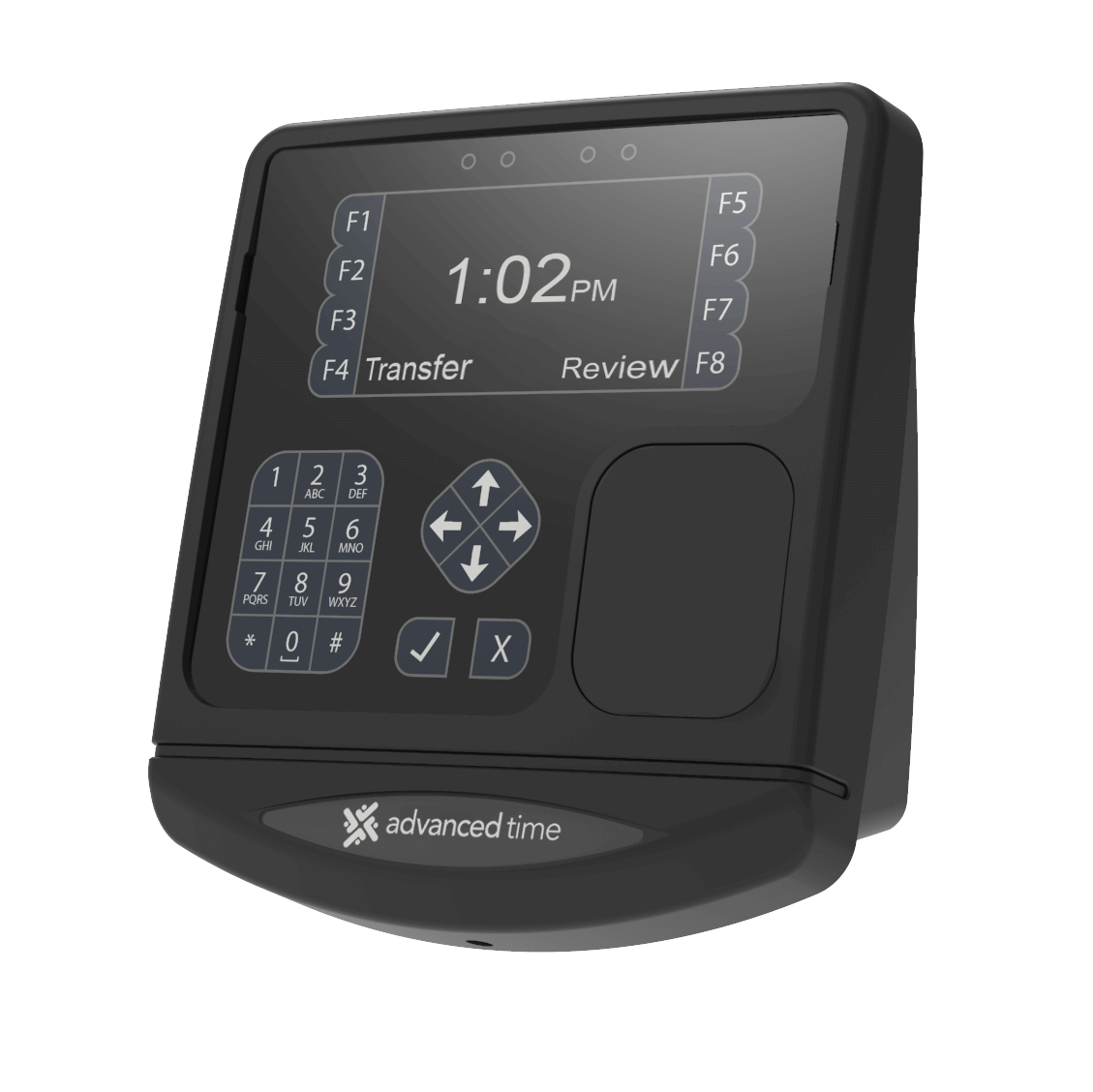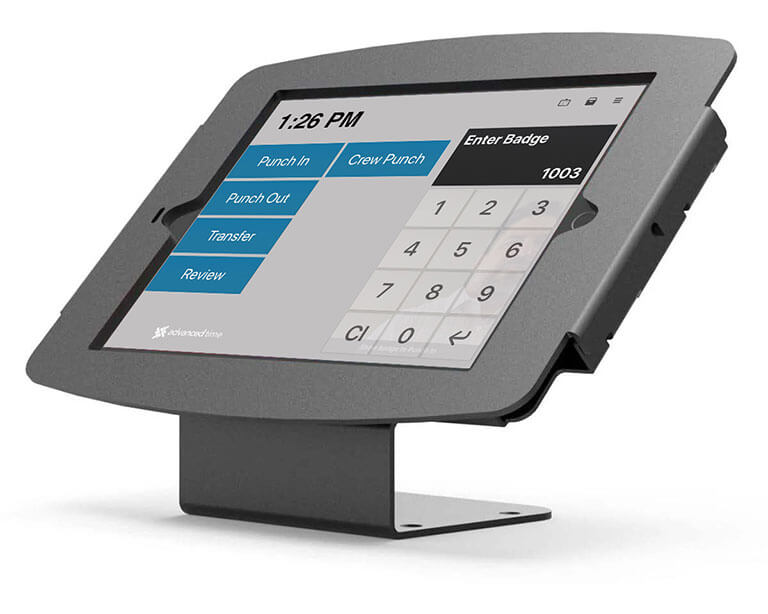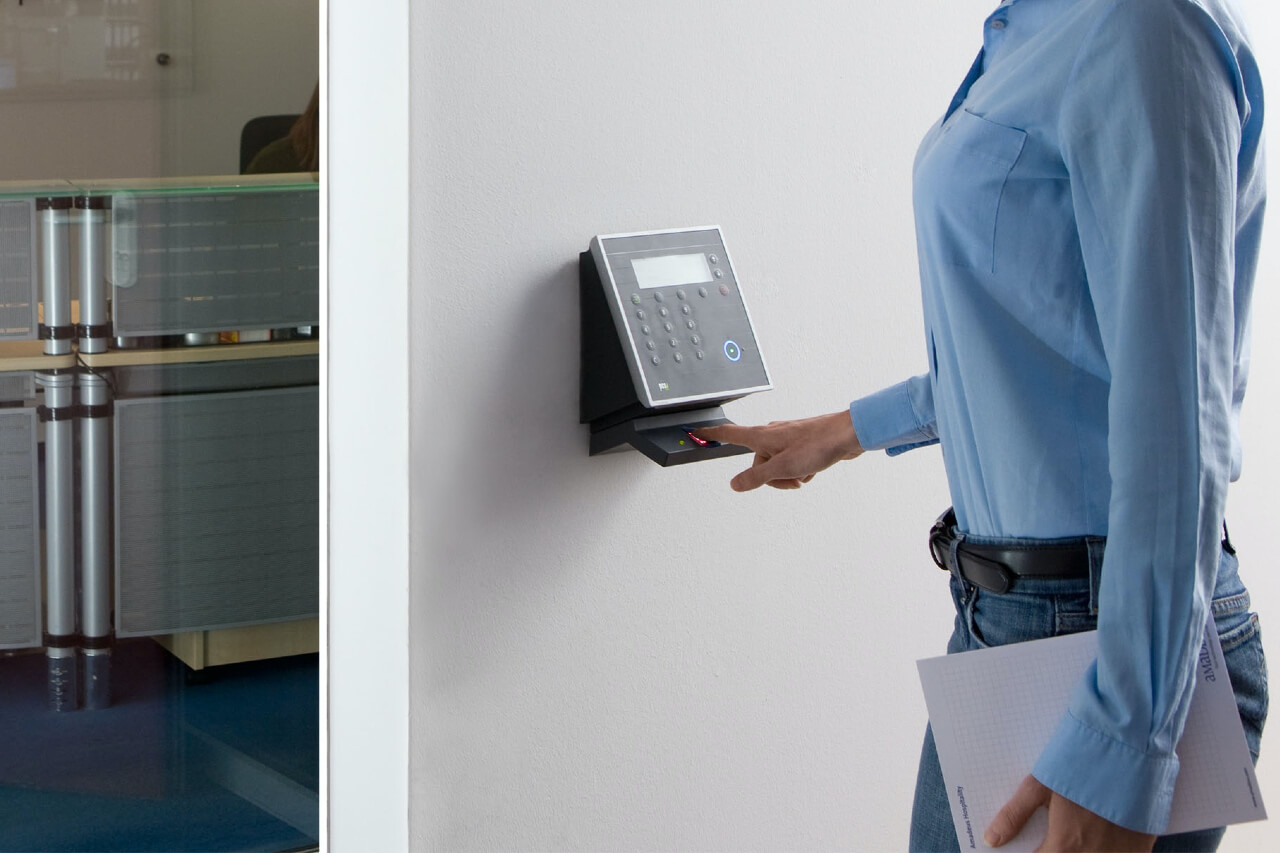Any business owner who’s moved past pen-and-paper timekeeping and scheduling knows the incredible value of the right time clock. They’ve become an essential tool in effective workforce management. Time clocks provide the necessary data to make educated labor decisions and maintain accurate time and attendance records.
But not all time clocks were created equal, and choosing the correct type of time clock is key to ensuring accurate time and attendance data collection. In some cases, they could also be key to the security and integrity of a business’ operations.
If you’re looking for a new time clock, or just want to verify that you have the best one to suit your needs, we’ll help you find the right fit.
Three Categories of Time Clocks
While each category can be broken down further, there are three main categories of time clocks: ones that require a unique employee identifier, ones that verify identity using biometric data, and ones with online remote accessibility.
Badge Time Clocks
Contrary to the category name, “badge” time clocks don’t always require a badge to clock in or out. Some require employees to physically punch their PIN number on a screen or number pad. Others involve scanning an RFID-equipped card or badge, or swiping a magnetic card. Some that are equipped with cameras can also scan an employee-specific QR code for clocking in and out of work. In some cases, one time clock could be capable of accommodating several options for punching in or out.

These time clocks are good for:
- Organizations with an on-the-go workforce that frequently moves between the same set of locations, even if the locations may move (i.e. a construction site).
- Locations with an unstable internet connection, as the device continues working offline, storing data until it can connect to the internet again.
- Organizations needing a cost-effective time clock option.
- Companies seeking accurate time tracking and minimal security, but don’t require full-blown security measures.
- Companies with large groups of employees clocking in or out at the same time, i.e. shift changes.
Biometric Time Clocks
While governmental agencies are continuing to establish the rule surrounding biometric time clocks and the data they collect, they continue growing in popularity across industries. These machines allow for a variety of ways to identify employees including facial recognition, retina identification or fingerprint recognition. One of the greatest benefits of these time locks is that they don’t require employees to carry badges with them.

Biometric time clocks can also greatly help control labor costs. The high accuracy prevents what’s called “buddy punching,” where an employee punches in or out of work for another employee who isn’t there. Buddy punching can lead to significant increases in labor costs without the benefit of an employee adding value through productivity during the time they aren’t actually working.
These time clocks are good for:
- Organizations needing to maximize security at facility entrances, or even specific areas of buildings without the use of badges.
- Businesses looking to crack down on ballooning labor costs.
Time Clock Software
Unlike the other types of time clocks, using cloud-based time and attendance software requires no central hub. It’s accessible to employees and managers through any computer or mobile device. In most cases, the software is even available through a mobile app. The software can be used on a device with internet access, like an iPad, that’s kept on-site for employees to request time off, review schedules, or handle other time & attendance-related needs.

While the software provides impressive flexibility and accessibility, it also requires significant trust. Employees have direct access to their time cards and are trusted to self-report. This accountability is aided by the option for GPS-enabled punch tracking to ensure employees are at their scheduled location when they clock in or clock out.
Cloud-Based time clocks are good for:
- Remote and hybrid workforces with the option to work from home.
- Businesses desiring GPS tracking for employees punching in and out at scheduled locations.
- Businesses on a time-crunch looking for an incredibly cost-effective option they can begin using immediately.
- Employers needing flexibility to access data and approve time cards on-the-go.
Making the Right Choice for Your Business
The decision to update to a new time clock model doesn’t need to be overwhelming. Even keeping the same model you currently have and simply integrating a second one in a busy location could have an enormous positive impact. Once you find the right fit for your business, you’ll see just how much easier it makes your workforce management.
If you still aren’t sure which time clock best suits your business’ needs, our time and attendance system experts are happy to help! Give us a shout through our contact form, or you can call our team directly at 1-800-841-3824.



